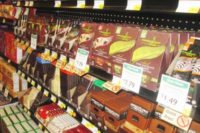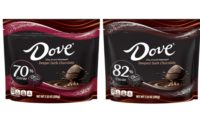
|
If you’re looking for a quick snack, odds are you’ll grab a chocolate bar in a convenience store and then hop in your car to unwrap it and take a bite — all before the sun goes down.
That’s according to snacking research by Port Washington, N.Y.-based The NPD Group, a leading global information company.
The company’s data says that everyday 28 million people in the United States eat a grab-and-go snack, which means it’s eaten within an hour of the purchase.
And, that snack is about 50 percent more likely to be eaten in a car than anywhere else.
That’s likely why convenience stores represent five times their fair share when it comes to grab-and-go snacking occasions, beating out grocery stores and even discount stores.
The research also shows that consumers choose sweet grab-and-go snacks twice as often as a salty snack.
The Top Ten grab-and-go snacks and the percentage of the time they’re part of an grab-and-go snack are:
- Chocolate candy/candy bars (12 percent)
- Gum (6 percent)
- Donuts (6 percent)
- Potato chips (6 percent)
- Chewy candy (5 percent)
- Cookies (4 percent)
- Ice Cream (4 percent)
- Fresh Fruit (4 percent)
- Bagels (3 percent)
- Tortilla Chips (3 percent)
“Manufacturers need to incorporate grab-and-go snacking as part of their go-to-market strategy, particularly when developing plans for the convenience store outlet,” says Darren Seifer, NPD food and beverage industry analyst. “Retailers might consider rotating the types of items stocked near the entrance or check-out counter to align with the grab-and-go snacker’s need by time of day.”
Grab-and-go snacks are also typically eaten between meals rather than replacing meals and they’re most likely to be eaten in the morning or midday. And, young adults, age 18-24, are the most inclined toward the instant gratification these types of snacks offer.
And, at more than half (61 percent) of all grab-and-go snacking occasions, the consumer is also drinking a beverage, mostly likely soda pop and water.
“Grab-and-go snacking represents a sizable opportunity and manufacturers and retailers can capture a larger share of this ‘buy and consume’ behavior by understanding the consumer dynamics that drive these purchases,” Seifer says.










